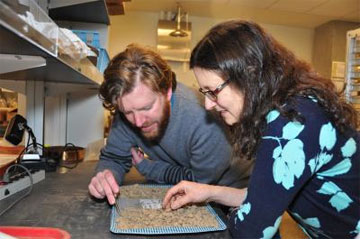
Ancient herring catch nets fisheries weakness
February 18, 2014
That is one of the key findings in the study, just published online in Proceedings of the National Academy of Sciences (PNAS). SFU researchers Iain McKechnie, Dana Lepofsky and Ken Lertzman, and scientists in Ontario, Alberta and the United States are its co-authors. The study is one of many initiatives of the SFU-based Herring School, a group of researchers that investigates the cultural and ecological importance of herring. This study's authors combed through reams of archaeological reports that analyse almost half a million fish bones at 171 archaeological sites from Alaska, British Columbia and Washington State. Up to 10,000 years old, the bones belonged to primarily Pacific herring, not the iconic salmon or any other fish, during a time when Indigenous fisheries reigned. The researchers drew from their ancient data-catch concrete evidence that long-ago herring populations were consistently abundant and widespread for thousands of years. This contrasts dramatically with today's dwindling and erratic herring numbers. "By compiling the largest dataset of archaeological fish bones in the Pacific Northwest Coast, we demonstrate the value of using such data to establish an ecological baseline for modern fisheries," says Iain McKechnie. The SFU archaeology postdoctoral fellow is the study's lead author and a recent University of British Columbia graduate. Co-author and SFU archaeology professor Dana Lepofsky states: "Our archaeological findings fit well with what First Nations have been telling us. Herring have always played a central role in the social and economic lives of coastal communities. Archaeology, combined with oral traditions, is a powerful tool for understanding coastal ecology prior to industrial development." "This kind of ecological baseline extends into the past well beyond the era of industrial fisheries. It is critical for understanding the ecological and cultural basis of coastal fisheries and designing sustainable management systems today," says Ken Lertzman, another SFU co-author. The SFU School of Resource and Environmental Management professor directs the Hakai Network for Coastal People, Ecosystems and Management.
Source of News:
E-mail your news &
photos to editor@sitnews.us
|
|||
